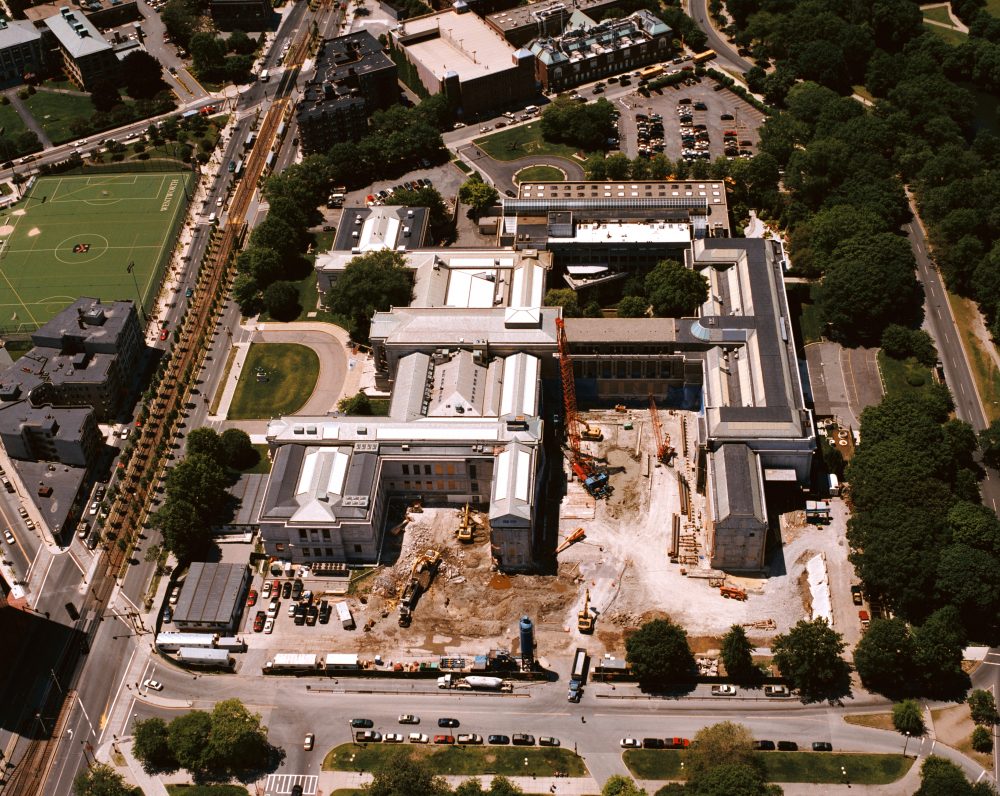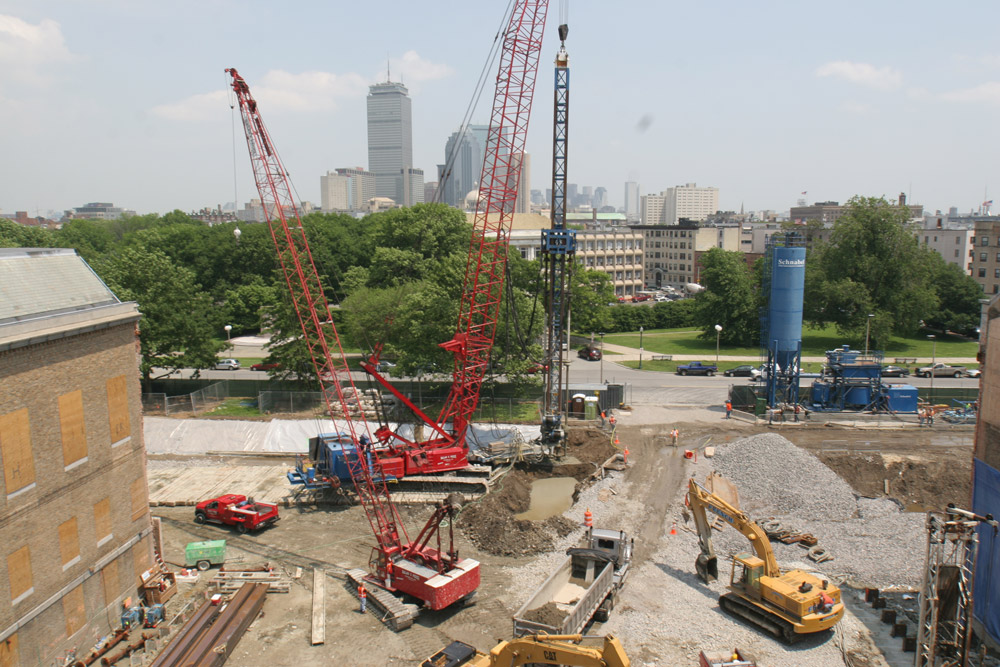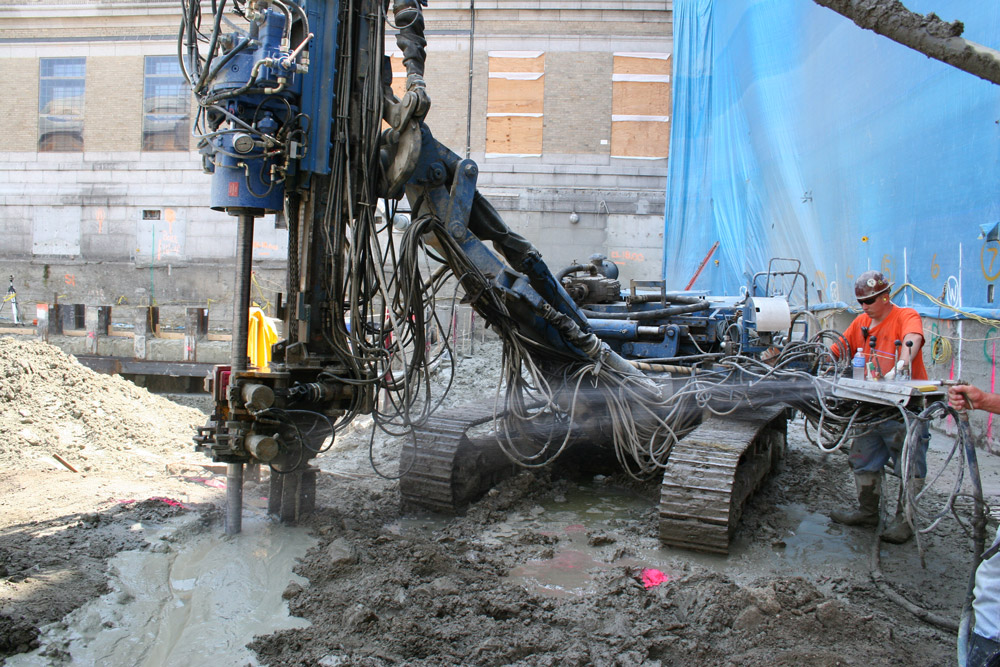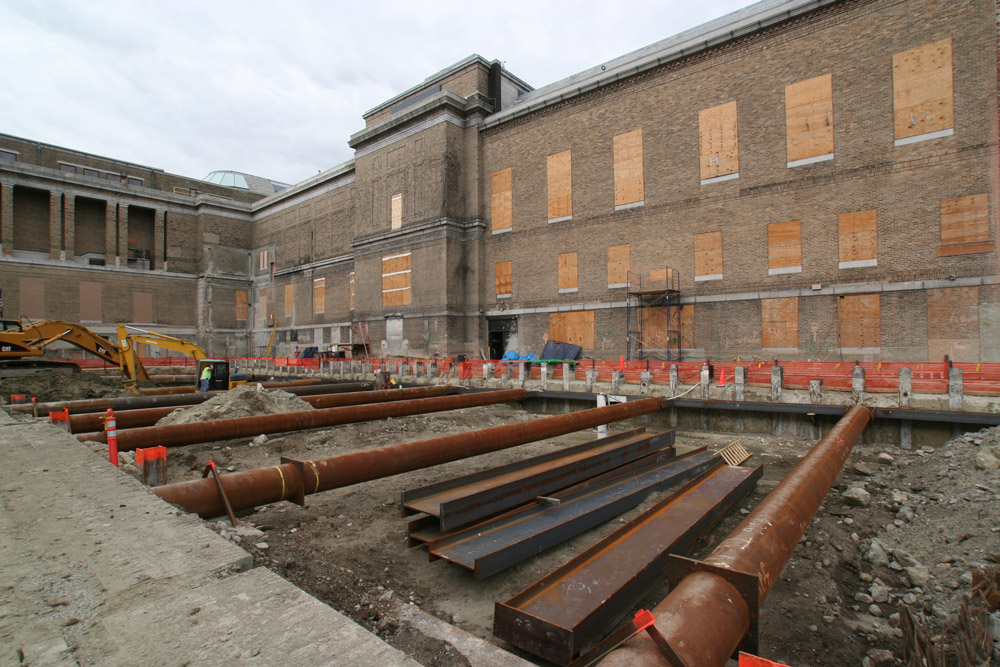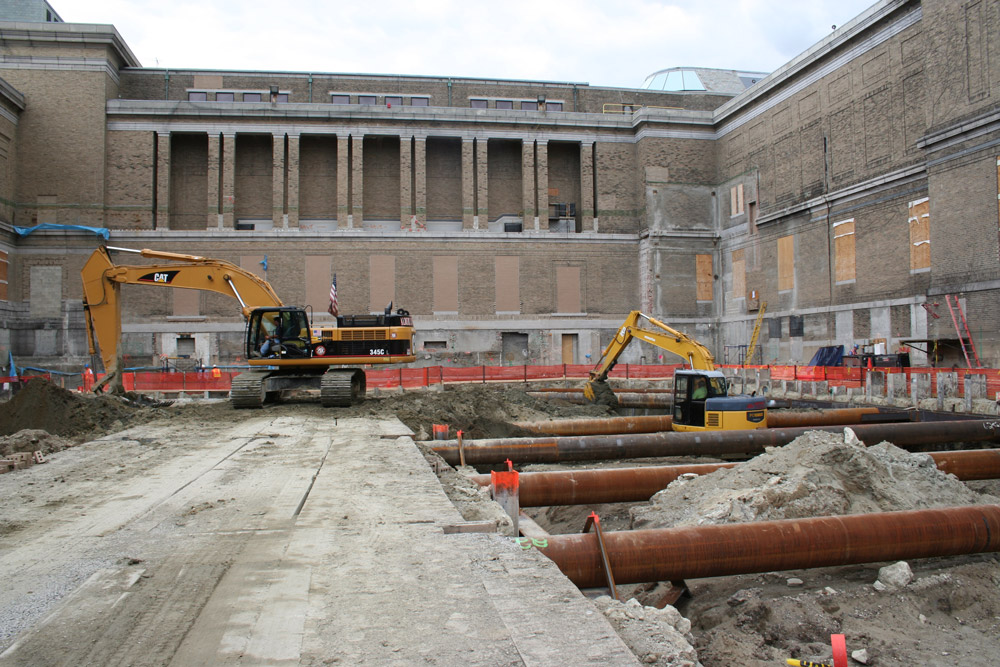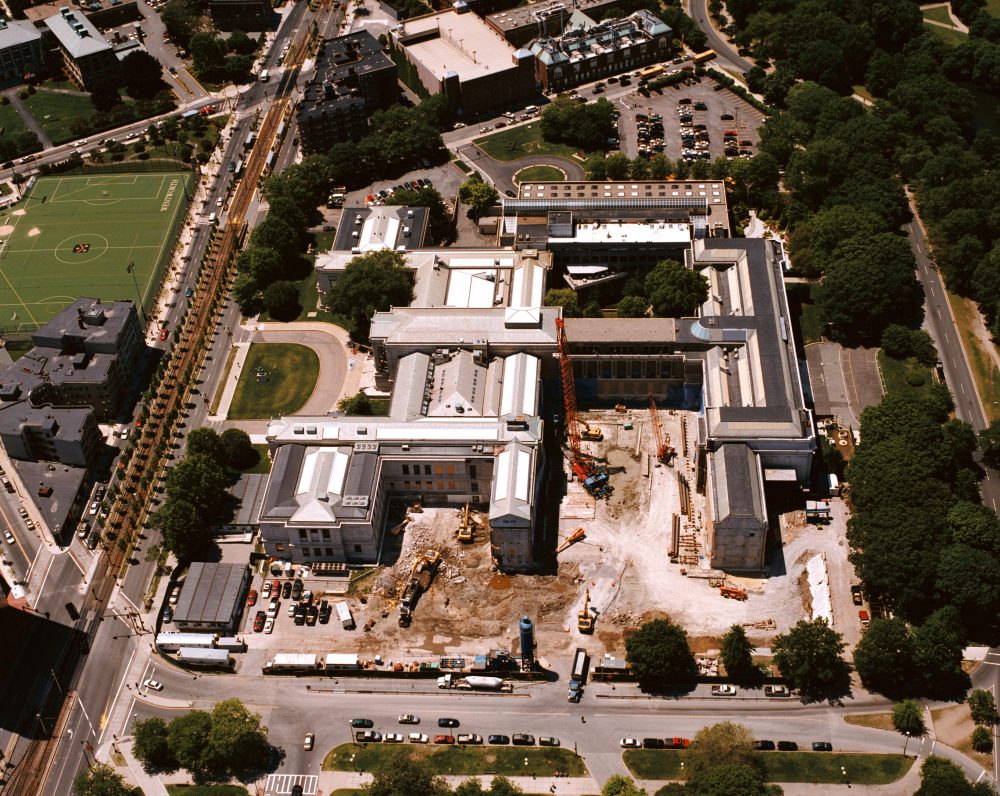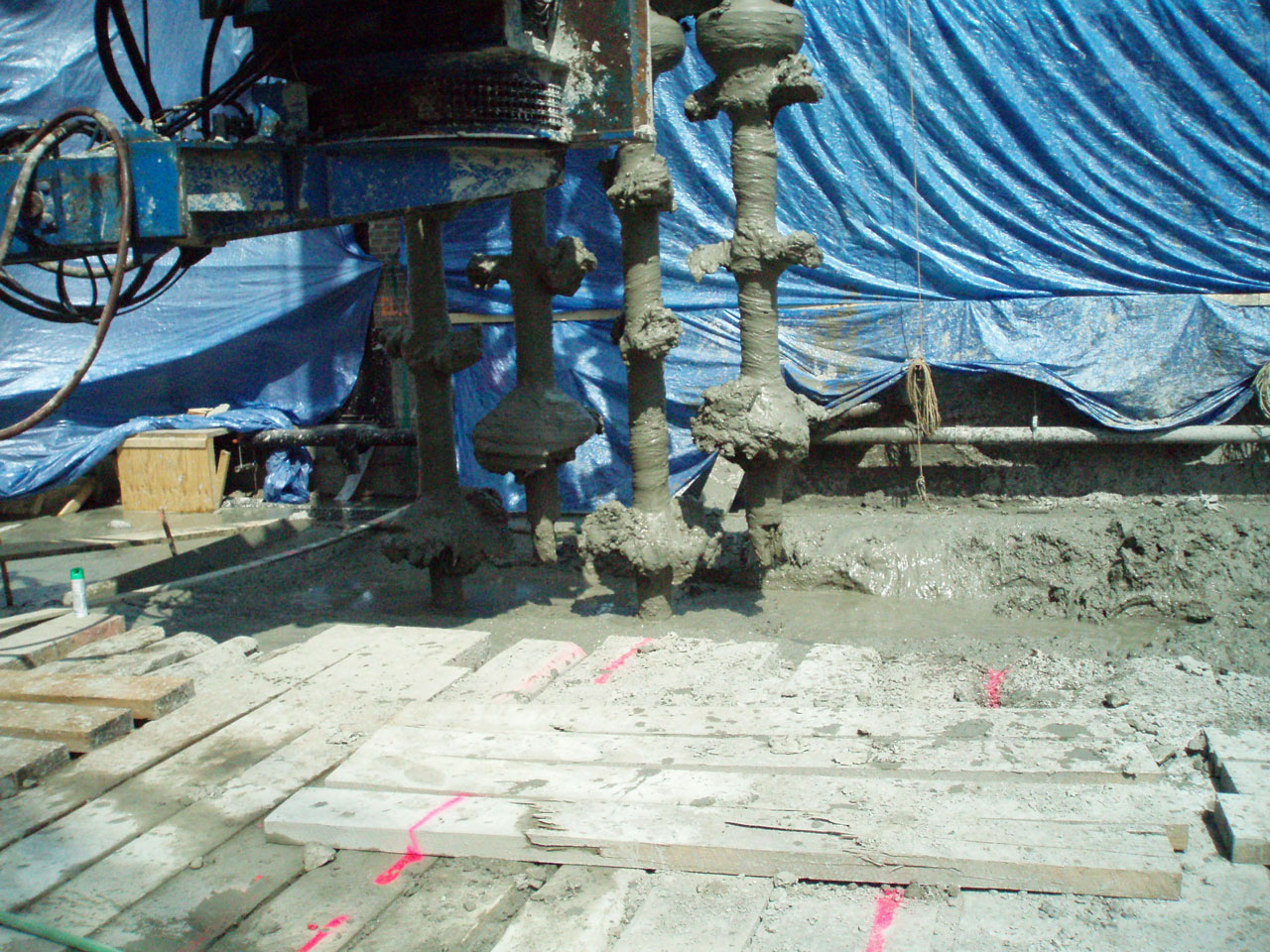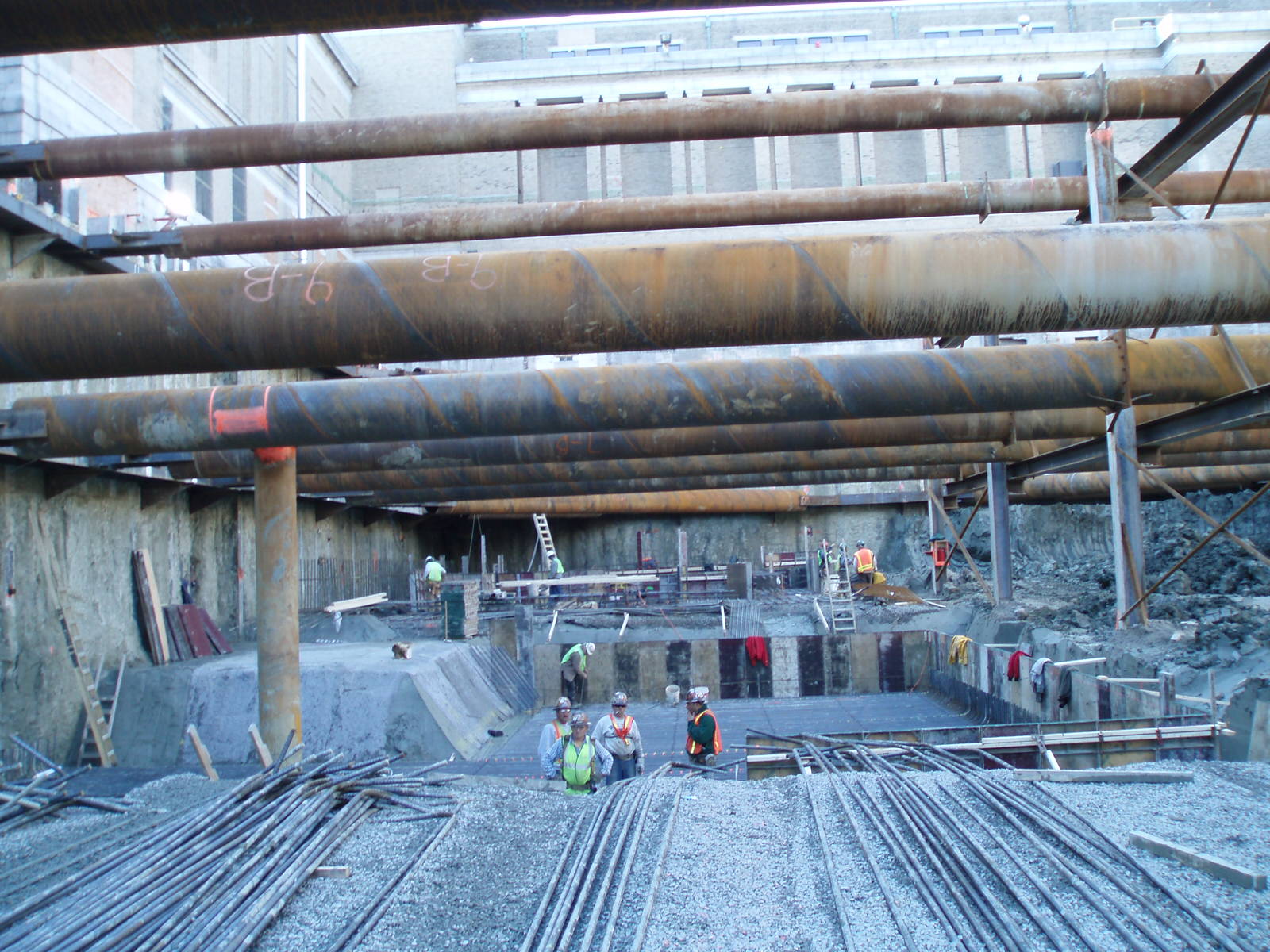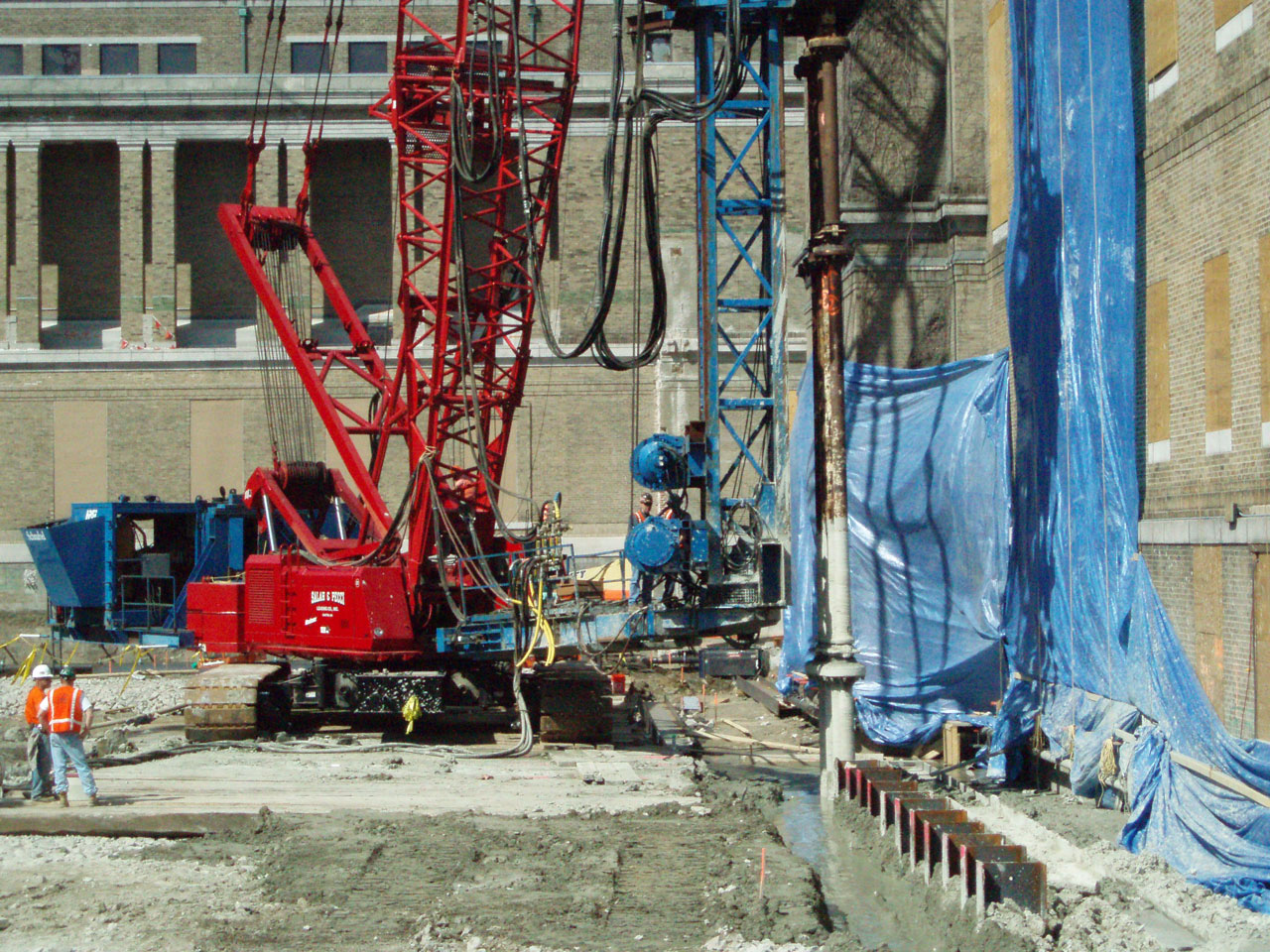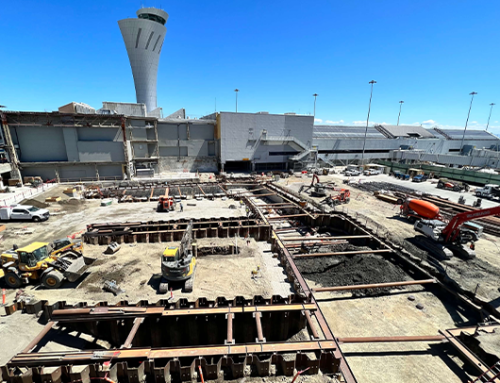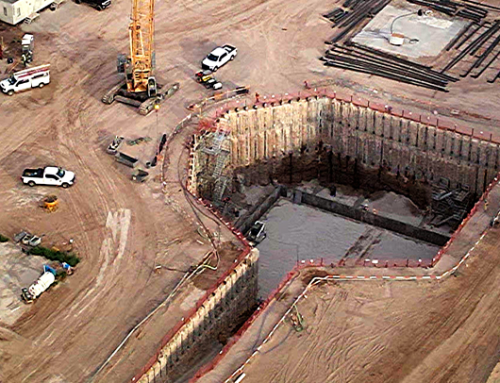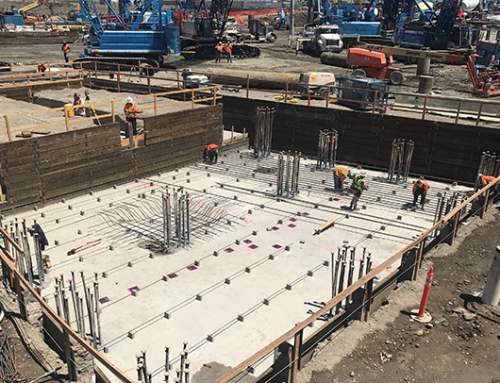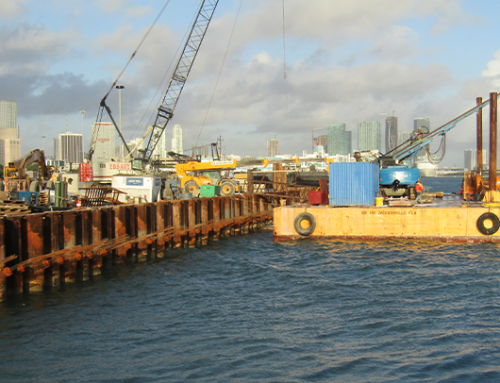City: Boston
State: Massachusetts
Owner: Museum of Fine Arts
General Contractor: John Moriaty & Associates
Project Description:
To increase exhibit and storage space, an addition was constructed at the Museum of Fine Arts located on Boylston Street in Boston, Massachusetts. The addition was located along the east side of the existing museum within an existing courtyard in the area of a recently demolished structure. The basement for the new addition extended up to 30 feet below the floor slabs of the adjacent buildings which were supported on a variety of foundations including; shallow spread footing in alluvial sand deposits, low capacity piles bearing in the alluvial sands and clay below, and caissons bearing on the alluvial sands and desiccated Boston Blue Clay crust. Groundwater was less 5 foot below existing slab grade.
To provide excavation support and limit the lowering the groundwater table outside the excavation, Schnabel installed a 66,000 square foot cement deep soil mixed (CDSM). The CDSM wall was selected to control deep seated ground movements, limit movements of adjacent structures, and inhibit groundwater flow into the excavation. Braces and a continuous wale were used to support the CDSM wall where it was located adjacent to structures. Tiebacks were used where there were no structures.
Other geotechnical construction at the site included:
- Jet grouting (JG) was used to improve the ground and provide an impervious subgrade layer at the west end of the addition.
- Concrete pier underpinning was used to support an existing structure on the west end of the site.
- A secant pile wall using alternating drilled concrete piles and JG columns was used for earth support and a barrier to groundwater for the installation of a storage tank at the south end of the site.
Inclinometers, total station surveying, vibrating wire strain gauges and tieback load cells were used to monitor performance of the excavation support system. Movement of the the shoring were all kept well below tolerable limits.
